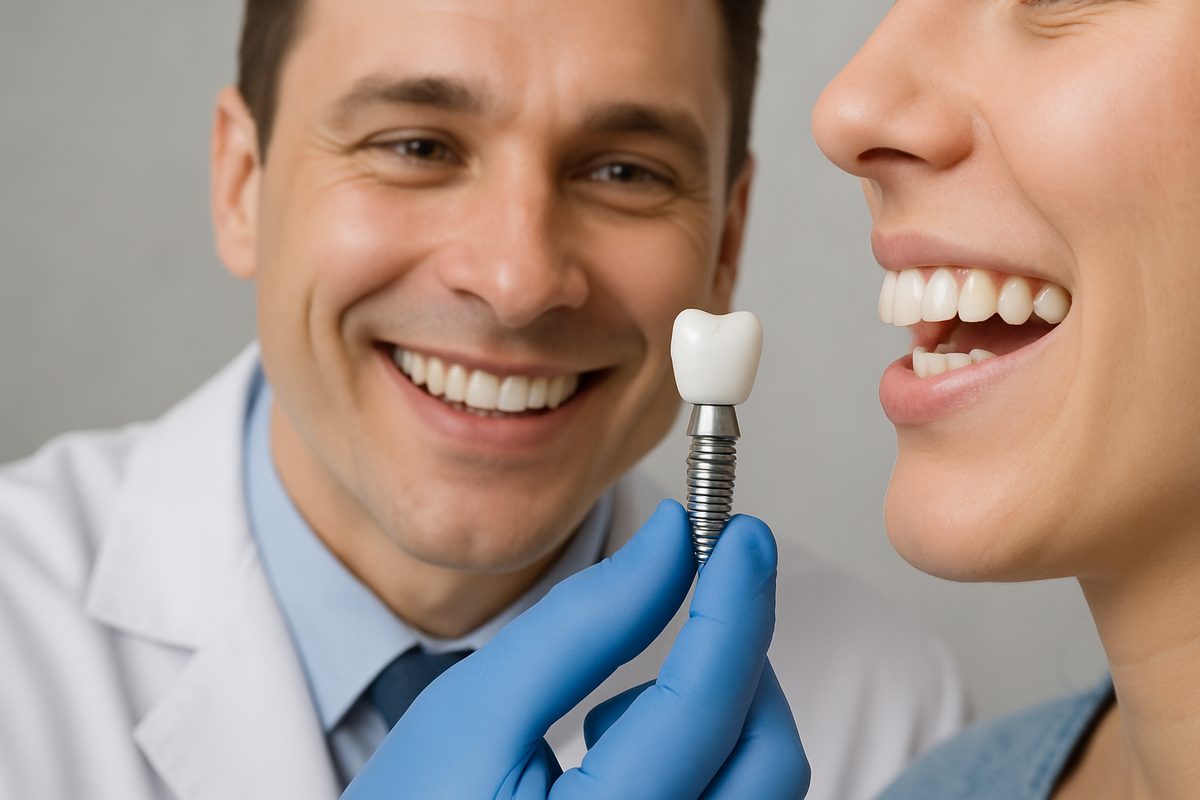blog - [City], [state]
Tips, Facts, And The
Latest In Dentistry

Cheap Tooth Replacement Options: Your Guide To Affordable Smiles
Posted in Dental Implants

Looking for cheap tooth replacement options? This guide explains quick choices, trade-offs, and how to get affordable care so you can pick a safe short-term fix or a longer-lasting solution that fits your budget.
Common cheap tooth replacement options
Removable partial denture (flipper)
A flipper is a lightweight, temporary partial denture made of acrylic that replaces one or a few missing teeth. Typical cost range: about $200–$700. Pros: very low cost, fast lab turnaround, and easy to adjust. Cons: less durable, can feel bulky, and may not match tooth color or bite as well as other options.
Traditional removable denture
Removable dentures replace several or all teeth in an arch. Partials clip onto remaining teeth; full dentures sit on the gums. Typical cost range: partials $300–$2,000, full dentures per arch $600–$1,800 (costs vary by materials and lab work). They suit people replacing multiple teeth on a tight budget. Maintenance includes daily cleaning, occasional relining, and checkups for fit and oral health.
Dental bridge (bonded or traditional)
A bridge uses adjacent teeth as anchors to hold a false tooth (pontic). Traditional bridges are cemented to prepared teeth; bonded bridges use adhesive and less tooth reduction. Cost per tooth often ranges $500–$2,000. Bridges are usually cheaper than implants up front and look more natural than many removable options, but they shorten the life of neighboring teeth due to preparation and may need replacement every 5–15 years.
Temporary/over-the-counter fixes and DIY options
These include denture adhesives, temporary crowns sold online, or DIY tooth replacements. They can be tempting because they’re very cheap or immediate, but they’re meant only for very short-term use. Risks include poor fit, gum irritation, damaged teeth, and hidden infection. Use with caution and see a dentist as soon as possible.
Pros and cons of common cheap tooth replacement options
Each low-cost option trades cost for durability, comfort, or long-term health effects. Below is a quick comparison of common factors:
- Cost: Flippers and OTC fixes are cheapest; bridges and traditional dentures are moderate.
- Appearance: Bridges and well-made dentures usually look better than basic flippers or DIY fixes.
- Comfort: Fixed bridges feel most like natural teeth; flippers and basic dentures can feel bulky.
- Longevity: OTC/DIY short-term only; flippers last months to a few years; bridges/dentures last several years with care.
- Oral health impact: Bridges require altering adjacent teeth; poor-fitting dentures can speed bone loss.
- Repairs/maintenance: Removable options need more frequent adjustments and relines; bridges may need replacement if supporting teeth fail.
When a cheap option makes sense: temporary needs, low budget, or waiting for a more permanent treatment. When to invest more: if you want long-term function, better chewing, or to protect bone and adjacent teeth—consider implants or a professionally planned long-term solution.
How to choose the right cheap tooth replacement options
Key factors to weigh:
- Number and location of missing teeth (front teeth need better aesthetics).
- Bone and gum health (affects ability to place implants later).
- Budget and willingness to replace or upgrade later.
- How long you need the solution—days, months, or years.
- Desired appearance and comfort level.
Questions to ask at a consultation:
- What is the total cost, including adjustments and future relines?
- How long should this option reasonably last?
- What maintenance is required and how often will I need follow-ups?
- Will this option harm nearby teeth or bone?
- Are financing or payment plans available?
See a dentist for an exam before choosing a cheap option—what looks like a simple missing tooth can hide infections or bite issues that change the best choice.
Next steps: finding affordable care and protecting your smile
Practical ways to make tooth replacement affordable:
- Check dental schools—care is lower-cost and supervised by experienced faculty.
- Look for community clinics or nonprofit dental programs that offer sliding-scale fees.
- Ask local offices about payment plans, in-house financing, or seasonal discounts.
- Compare quotes from a few dentists rather than accepting the first price.
Care tips to extend the life of a cheap option: clean removable appliances daily, avoid very hard foods, get routine checkups, and treat sore spots or looseness early. Signs you should upgrade: persistent pain, worsening fit or bite, trouble chewing, or bone loss seen on X-rays.
If you want help weighing cheap tooth replacement options for your situation, book a consultation to review costs, lifespan, and the safest short-term vs long-term path for your smile.





